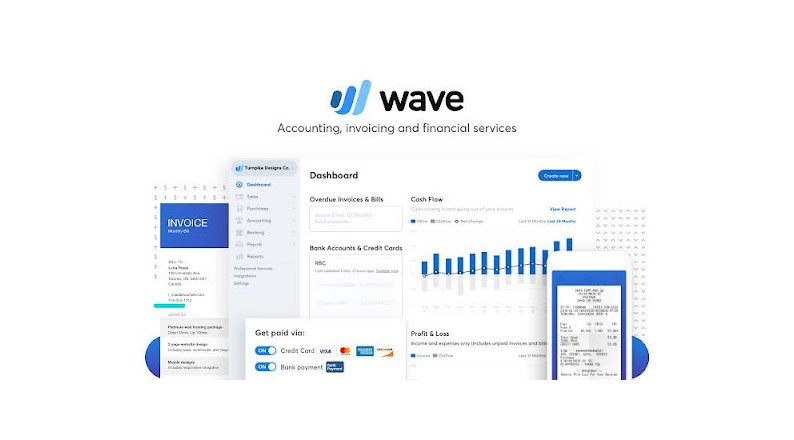Table of Contents
We can all agree that if your business is still trying to attract customers the old-fashioned way, you are definitely having trouble competing. Everyone wants to use fast, dependable services now that technology has advanced.
The eCommerce sector is becoming more competitive daily for practically all goods and services, irrespective of the industry.
Additionally, everyone is attempting to establish themselves via various channels in this age of digital encounters.
Regarding digital marketing, content strategies and campaigns rule the market, and the most prominent trend in eCommerce right now is content-based commerce.
As a result of market changes and consumers’ propensity to consume a lot of online material via computers, tablets, mobile devices, digital TVs, films, etc., marketers have begun to view content strategy as a crucial component.
Smart consumers read reviews, blogs, and videos on numerous online channels before making purchases. In this article, we’ll explain the value of content-driven commerce for your company and the various ways you can implement it.
Keep reading to learn more about content-driven commerce and its importance.
What is Content-Driven Commerce
A content-driven approach focuses on conveying your brand’s narrative in a way that is interesting to your target audience, provides them with value, increases their trust in your brand, and motivates them to take action by interacting with it.
The importance of content-driven commerce strategies is to focus on being understated as a business.
This means you do not have to shout about your brand but instead offer valuable information that shows that your brand is what it claims to be.
According to Statista, 5 billion people, or 63% of the world’s population, used the internet as of April 2022. Social media users made up 4.65 billion.

Global Digital Population as of April 2022 – Image Source: Statista
This data indicates that eCommerce is an excellent way to keep up with the current dynamic technology.
Importance of Content-Driven Commerce
The relationship between online content and commerce is more crucial than ever, and compelling content—both in terms of text and images—is the key to attracting customers with outstanding items and keeping them interested.
Understanding the cause-and-effect relationship between excellent content and well-planned eCommerce experiences will give you the following benefits.
1. High Brand Awareness
Brands that provide exciting content establish strong bonds with their audience. Any visitor to your website expects you to be an authority on your items when they visit your site.
If visitors visit your website, inquire about a particular product you advertised, and respond with confusing information, they will likely leave the site immediately.
Potential buyers get more familiar with the products. They are more likely to feel connected to the brand before making their first purchase when interacting with the material that businesses supply.
Potential buyers get more familiar with the products. They are more likely to feel connected to the brand even before they make their first purchase when interacting with the material that brands supply.
The information you provide in your content strategies should be clear, lengthy, with short sentences, and factual.
This is because it is easy to verify information with the current technology. Giving false information will make your consumers not trust your products and services.
A good example of a brand that has thrived through content-driven strategies is Airbnb.
They make sure to update their website with different images of different places. The aesthetics used represent what the customers expect when they visit the site.

Airbnb Advertisement – Image Source: Airbnb Newsroom
2. Boosts Conversations
Profit is ultimately the fundamental objective of any business. Here is where the importance of content-driven commerce will be evident.
Customers are more likely to make a purchase the longer they stay on a website. One KPI that directly correlates with higher conversion rates is engagement.
How do you achieve this?
1. Creating Products or Service Guides
Your online store can provide guides for its products or services that advise customers about crucial details about your business.
For illustration, the invoicing company Wave clearly describes its services. To enhance user experience, they have a dedicated blog where they post helpful guides.
Most of their content is aimed at small business owners, offering advice on accounting, bookkeeping, and other financial advice.

Wave Services – Image Source: Business 2 Community
2. Sharing Product Reviews
As both material and social evidence, you can share product reviews that appear on many websites and blogs.
Discover the positive comments people leave about your company, then choose the most appealing ones to publish on your channels.
The makeup brand’s reach is further increased by such posts, which offer social proof to potential consumers and make it simple for current customers to share with their networks. This results in more people wanting to purchase the brand’s products.
Below is a product review that will hasten purchases from your new and old customers.

Product Review – Image Source: PowerReviews
2. Providing Online Courses
Going above and beyond to provide your consumers with a comprehensive, high-value online course will not hinder your connection with them and will likely help them grow.
The information you provide to support your products’ benefits and use cases should be highlighted in your course.
A good example is an online store selling computer accessories that incorporate information on how you can make money using them.
By doing so, consumers believe you have their interests in your heart.
3. Better Organic Traffic
Any successful inbound marketing strategy relies on organic traffic to thrive.
Most strategists are unaware that content-driven commerce may maximize the organic search potential of your website, but doing so calls for a solid strategy and a thorough understanding of organic traffic.
Organic traffic is the percentage of site visitors who find your website through a search engine. The more frequently your website appears in search results, the more likely users will visit it.
These visitors will consequently consume more of your information, have greater faith in your brand, and be exposed to your products more frequently.
You may increase organic traffic to your website in a variety of ways, including:
- Target your buyer personas
- Using and researching organic long- and short-tail keywords
- Developing comprehensive content
4. Increase in Trust
You shouldn’t undervalue the importance of content-driven commerce in establishing brand trust. Customers are more inclined to trust you if you regularly put in the effort to educate them about your products and services.
Most people think that simply putting product images on their websites is sufficient. Include videos in your material to explain how various products work, how to buy them, as well as different offers if you buy particular products.
People will also need reviews and ratings to decide whether or not to buy your products. Always ensure that you respond positively to customers’ positive and negative comments.
You should be expecting both sides from different customers. You should take the initiative always to make the user experience reliable.
Below is an example of customer reviews and stings from a coffee shop. With them being open for anyone to read, it becomes easy to attract more customers to your business.

Customer Reviews and Ratings – Image Source: Rival IQ
5. Better Comprehension of Your Customers
As customers interact with your website, you can see what they are interested in and look at. This helps you better understand how to improve and tailor their experience by proposing additional goods.
The most effective tool on your website is your clients. They have the power to make or break your website.
Balance the interests of the organization and the customers to prevent being broken. When managing your consumers’ complaints, be patient with them.
Different Types of Content-Driven Commerce
You need to comprehend the importance of content-driven commerce and the various ways you may include diverse content strategies to develop brand awareness, establish credibility, educate your audience, and foster loyalty with your current clients.
Some strategies are more effective compared to others depending on what you deal with in your business.
Below are examples of commonly used content strategies:
1. Blogs
The difference between a successful brand and the competition is consistency online. Having a well-curated blog is one method to distinguish out.
A carefully maintained blog is more than just a collection of random words posted every other day. It’s a tactic that entails diligent content preparation, creation, and dissemination.
According to HubSpot data, a blogging-based marketing plan is 13 times more likely to market your products and services successfully. Rather than other forms of advertising, most consumers prefer to learn about a brand through blog posts and articles.
Using the blog content-driven commerce poses the following benefits:
- Gives your brand a personality. Consistently putting out excellent blog content gives your brand a personality by reaffirming and strengthening your brand name online. It’s a friendly, non-invasive way to tell your customers who you are and what you stand for.
- Cost-effective. Marketing is expensive. In actuality, large companies have an advantage in terms of marketing.
The good news is that you can share your blog on several social media networks as a small business. On these sites, sharing is free, and you can reach a larger audience.
- Aids in the conversion of readers to customers. By consistently offering great SEO and high-quality educational material, you may persuade clients that you understand their needs, which will help you quickly gain their faith and trust.
Some satisfied consumers might even recommend you to their friends and family, making you their go-to information source.
Below is a blog post of a plumbing company that is selling its services by explaining to consumers how they can handle raw water issues.
Customers will learn from the blog, and as a result, they will desire to be helped by a professional from your company.

Blog Post – Image Source: IMPACT
2. Products and Brand Video
Video marketing uses videos for advertising and marketing your product or service, boosting interaction on your digital and social channels, informing your audience through a new medium, and enhancing engagement.
Technology advancements have made it simple to connect with consumers via many video channels on various platforms, like YouTube, Facebook Live, Instagram Live, and others. The use of video ranks second in pushing content-driven commerce.
More than 60% of marketers report increased customer acquisition costs. In addition, 83% of video marketers claim that video aids in generations of leads.
Not only has video impacted how businesses market and consumers shop, but it has also changed how salespeople interact with and convert prospects and how customer service teams look after and delight customers.
Start with a video marketing strategy before setting up, recording, or editing anything. This is important as every choice you make while making your film will relate to its goal and the action you want viewers to do after seeing it.
Some types of video, such as expert interviews, brand, event, and demo videos, can be incorporated into your strategy.
3. Providing User guides
Customers frequently have questions about how certain things work, especially high-tech products. Such goods call for detailed instructions and direction for difficult operational tasks.
User guides are developed for such paperwork to give the instructions or directions that assist end users in comprehending the utilization of a product. Images, slides, or short videos can accompany user guide manuals.
By giving users the tools to identify, comprehend, and resolve common technical issues on their own, user guides can reduce customer complaints and annoyance.
Regardless of how complex the product is, incredibly useful user manuals, logically written and simple to follow and understand, make the customer feel valued and significantly increase their level of happiness.
Below is an example of a user guide on changing the WordPress title and tagline. This makes it simpler for users who use WordPress services.

User guide – Image Source: HeroThemes
Other important content-driven commerce examples include e-books, product catalogs, social media posts, and advertisements.
Examples of Brands That Are Utilizing Content-Driven Commerce
Many companies are trying to utilize the importance of content-driven commerce strategies. Most of these companies are giving testimonials of how content strategies have become a game changer.
These companies and platforms include:
1. Pinterest
Pinterest promotes information that is too alluring for users to resist, making marketers jump at this opportunity. Pinterest has over 433 million users making it an excellent platform to market your brand.
You can link your visual content on Pinterest to another website, specifically your website. You can use this function to distribute written and visual information while linking users to your website.
Below is Etsy marketing its goods and services through Pinterest. By clicking the link, you get to their page.

Pinterest Images – Image Source: Later
2. REI
REI is a bold outdoor and leisure retailer in its content marketing moves. Their niche-specific material is laser-focused, which has aided in creating a passionate following for the company.
They have many articles about outdoor pursuits, like skiing and bicycling. Of course, suppose you are looking for somewhere to have this fun.
In that case, you will want to be associated with a company that prioritizes making customers aware of different activities.
To achieve this, REI updates its content on different social media platforms. Their major concern is customer safety which builds trustworthiness.
Below is an advertisement made by the company.

Advertisement – Image Source: Media Radar
3. Beardbrand
Beardbrand is a company focused on selling beard products and has not lagged in incorporating different content drive commerce strategies.
They add value to their consumers by offering information about developing and maintaining a healthy beard.
They educate their clients first, providing them with the fundamentals of beard maintenance through their blogs or email lists.
By using education as a marketing strategy, they have been able to develop a devoted following of beard growers and establish their brand as an authority on the finest grooming techniques, equipment, and supplies for a healthy beard.
Through their educational blogs and articles, Beardbrand has grown from living in a world where beards were frowned upon to creating a culture that embraces and accepts beards without the community having to conform to or embrace previously held stereotypes about men who grew beards.
Through this, they have pushed their products to many customers. They encourage reviews and FAQs from their consumers.
Conclusion
Both small and large corporates should not underestimate the importance of content-driven commerce.
As an entity, even if you won’t try all the content marketing strategies, incorporate at least three of them, and you will thrive.
Each tool has its advantages and disadvantages; make it your priority to know them.
Content marketing increases client loyalty, enhancing organic website traffic, dialogues, and awareness of customer expectations and organizational gaps. Your goal as an organization is to make sales while putting your customers’ needs first.
You can utilize various tools to accomplish your content marketing goals, including blogs, social networking platforms, videos, ebooks, and advertisements. Before selecting any of these tools, make sure you have a strategy at your disposal.
You can always research how different organizations incorporating different content-driven commerce tools are fairing. After incorporating the marketing tools, make sure to perform some evaluation to know about areas that need changes.
Acowebs are developers of Woocommerce bulk discounts that will help you add bulk discounts to products on your stores. It also has developed various other plugins like the popular plugin for managing the checkout form fields in WooCommerce, called Woocommerce Checkout Manager, which is highly feature-oriented yet lightweight and fast. There is also a free version of this plugin available in the WordPress directory named W0ooCommerce Checkout Field Editor.











 Login
Login
 Cart
Cart








